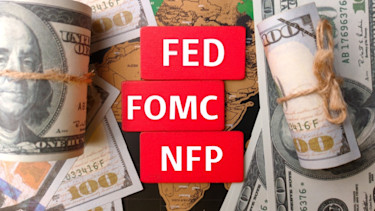Our research
Access all our publications and columns. Use the filters to easily find what content you are looking for.
Filters
All publications
1806 results
The Week Ahead - 22 - 26 December 2025
- Macro economy
-
These are the Key Macro Events for the upcoming week.

Podcast - Talking Macro: Can Europe capture some of America’s exorbitant privilege?
- Macro economy
-
In this special festive episode, Bill talks with outgoing Chief Economist and incoming Chief Sustainability Officer Sandra Phlippen about the US's exorbitant privilege, and whether Europe might be able to capture some of it.

US - Labour market weakness to keep the Fed cutting
- Macro economy
-
After a long drought of data, the labour market report hit hard. October payrolls fell by 105k, while November payrolls increased by 64k. Combined with a small rise in the participation rate, this led to the unemployment rate rising to 4.6%, from a high 4.4% in September. Part of this might be due to misreporting from furloughed workers during the government shutdown, which would be temporary.

China: Domestic demand slows, imbalances keep rising
- Macro economy
-
China's November data point to further slowdown in domestic demand. China's rising imbalances may lead to new trade tensions, also with EU. Central Economic Work conference signals shift in focus towards investment support.

The Week Ahead - 15 - 19 December 2025
- Macro economy
-
These are the Key Macro Events for the upcoming week.

Carbon Market Strategist - Carbon prices heat up in 2026
- Sustainability
-
In this publication: A looming supply deficit in 2026 due to tightening emissions cap and reduced free allocations is a key driver of rising prices, with an expected supply reduction of around 180 million ton (YoY); Traders and funds are driving the bullish momentum with increased hedging and long contracts; Despite uncertainties around free allocation benchmarks and shipping allowances, tighter supply is expected to drive the upward trend in 2026; We see prices reaching 100 EUR/tCO2 by year end.

FOMC Watch – It’s time to slow down
- Macro economy
-
Consistent with consensus expectation and market pricing, the FOMC decided to lower the policy rate by 25 bps.

ESG Economist - How extreme weather events can make the transition more expensive
- Sustainability
-
In May of this year, the Network for Greening the Financial System (NGFS) published a quantification of a set of climate scenarios with a time horizon of 5 years. It was the first time that NGFS elaborated climate scenarios with a shorter time horizon. In this note, we select some useful findings from these NGFS scenarios.

ESG Economist - Reshaping gas, carbon, and power markets through the energy transition
- Natural resources
-
Renewables and reforms weaken the gas–carbon–power link, shifting price drivers to long-term factors like renewables, flexibility, and stricter emissions caps.

The Week Ahead - 8 - 12 December 2025
- Macro economy
-
These are the Key Macro Events for the upcoming week.
